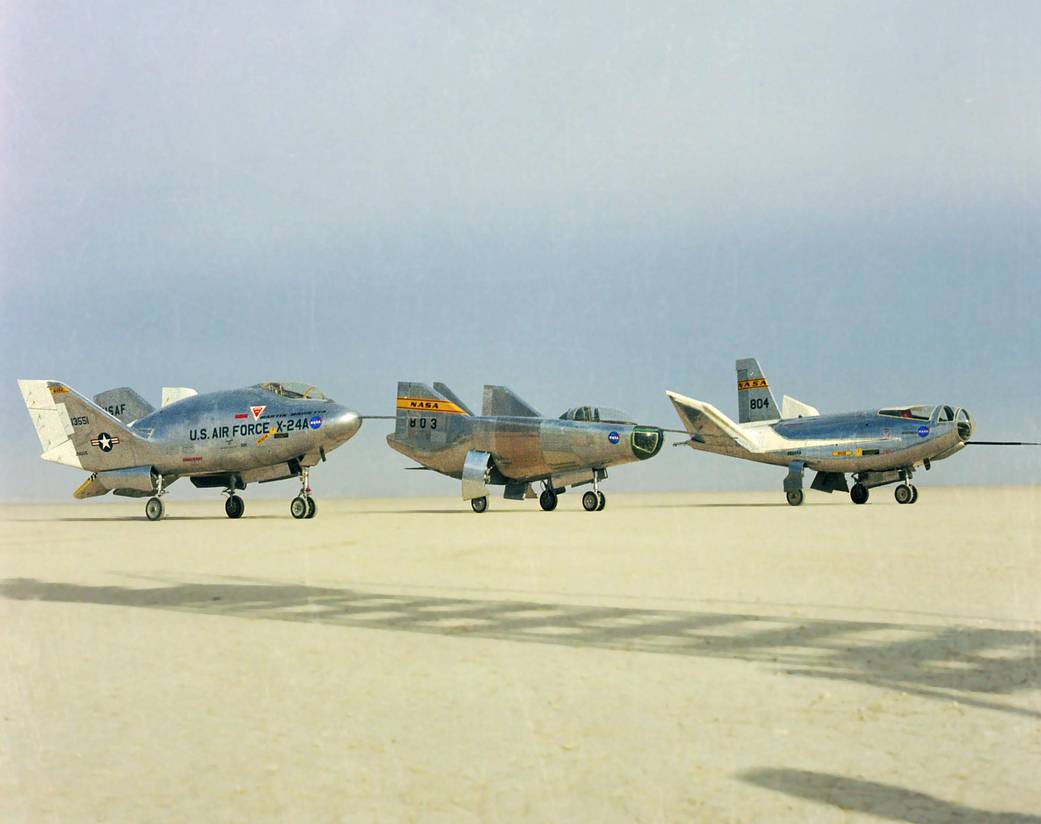
A fleet of lifting bodies flown at NASA’s Flight Research Center (now Armstrong Flight Research Center) in Edwards, California, from 1963 to l975 demonstrated the ability of pilots to maneuver and safely land a wingless vehicle. These lifting bodies were designed to validate the concept of flying a wingless vehicle back to Earth from space and landing it like an aircraft at a pre-determined site.
These unique research vehicles, with their unconventional aerodynamic shapes, were the M2-F1, M2-F2, M2-F3, HL-10, X-24A, and the X-24B. The information the lifting body program generated contributed to the database that led to development of the space shuttle program.
Aerodynamic lift – essential to flight in the atmosphere – was obtained from the shape of the vehicles rather than from wings as on a normal aircraft. The addition of fins and control surfaces allowed the pilots to stabilize and control the vehicles and regulate their flight paths.
All but the M2-F1 were powered by the same type of XLR-11 rocket engine used in the Bell X-1 – the first aircraft to fly faster than the speed of sound. The M2-F1, a lightweight prototype, was unpowered.
Background
The original idea of lifting bodies was conceived about 1957 by Dr. Alfred J. Eggers Jr., then the assistant director for Research and Development Analysis and Planning at the Ames Aeronautical Laboratory, now NASA’s Ames Research Center in California’s Silicon Valley.
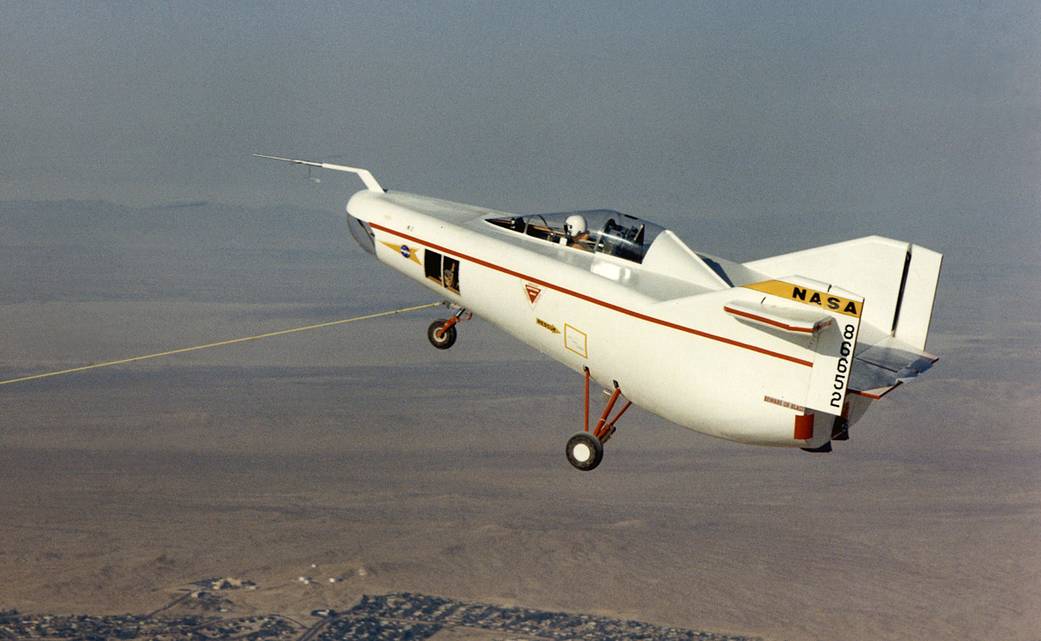
NASA’s predecessor, the National Advisory Committee for Aeronautics, had earlier been investigating the problems associated with re-entry of missile nose cones. H. Julian Allen, another Ames engineer, determined that a blunt nose cone was a desirable shape to survive the aerodynamic heating associated with re-entry from space. Eggers found that by slightly modifying a symmetrical nose cone shape, aerodynamic lift could be produced. This lift would enable the modified shape to fly back from space rather than plunge to earth in a ballistic trajectory.
These studies by Eggers, Allen, and their associates led to the design known as the M-2, a modified half-cone, rounded on the bottom and flat on top, with a blunt, rounded nose and twin tail-fins. This configuration and those of the later lifting bodies allowed them to be maneuvered both in a lateral and a longitudinal direction so they could be landed on a runway rather than simply parachuting into the ocean as did the contemporary ballistic capsules used in the Mercury, Gemini, and Apollo programs.
The Pioneering M2-F1
In 1962, Flight Research Center Director Paul Bikle approved a program to build a lightweight, unpowered lifting body as a prototype to flight test the wingless concept. It would look like a “flying bathtub,” and was designated the M2-F1. Built by sailplane designer Gus Briegleb, it featured a plywood shell placed over a tubular steel frame crafted at the center. Construction was completed in 1963.
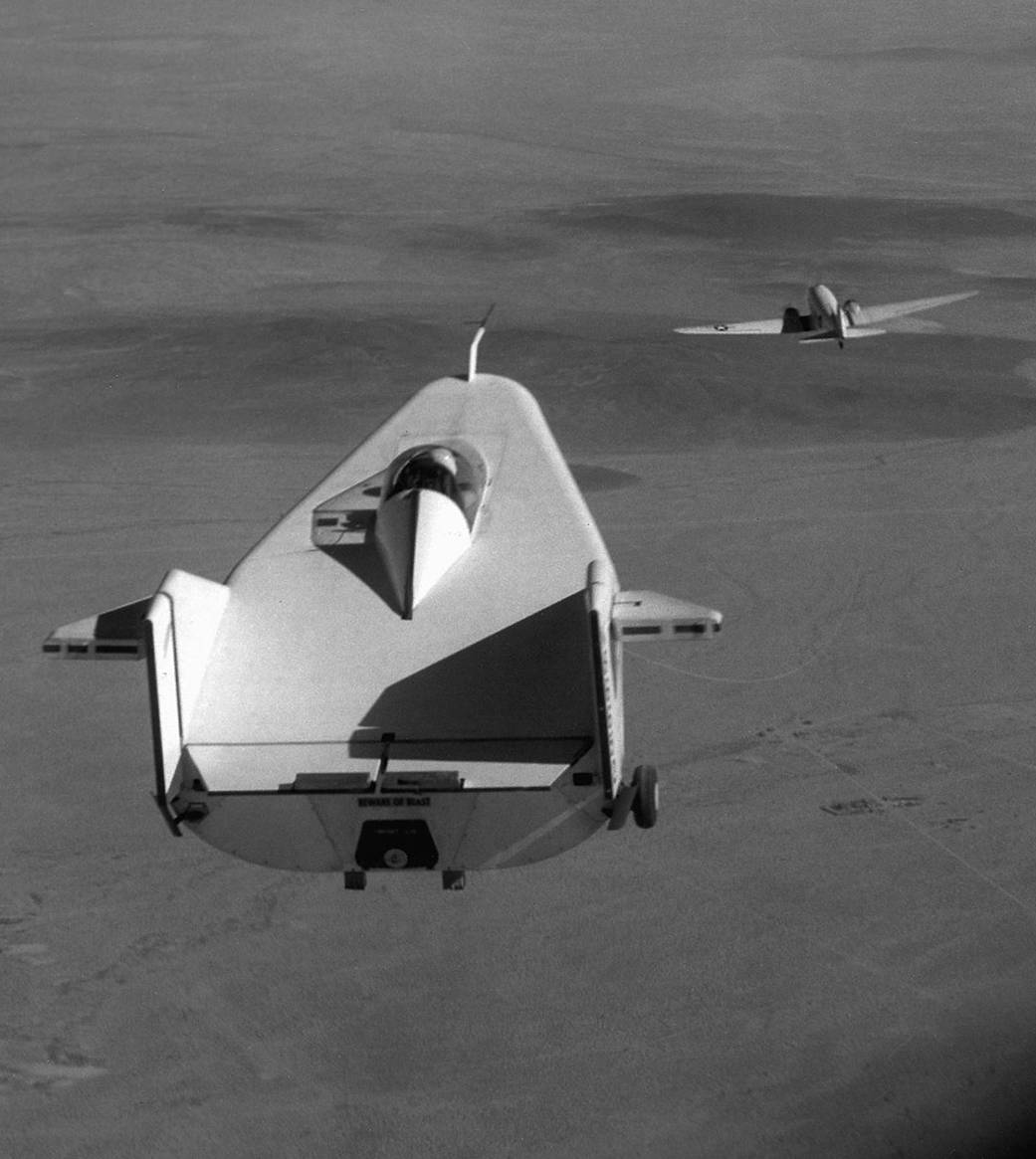
The first flight tests saw the M2-F1 towed aloft by a hopped-up Pontiac convertible driven at speeds up to 120 mph across Rogers Dry Lake. These initial tests produced enough flight data about the M2-F1 to proceed with flights behind a NASA R4D tow plane at greater altitudes. The R4D (the Navy designation of the C-47 or civil DC-3) towed the craft to an altitude of 12,000 feet where it was released to fly freely back to Rogers Dry Lake. NASA research pilot Milt Thompson flew the M2-F1 during the first series of tests.
Typical glide flights with the M2-F1 lasted several minutes at speeds of 110 to 120 mph.
More than 400 ground tows and 77 aircraft tow flights were carried out with the M2-F1 before it was retired. A historical artifact now owned by the Smithsonian’s National Air and Space Museum, the M2-F1 is on long-term loan to NASA Armstrong and has been restored to flight-like condition.
The Heavyweights
The success of the M2-F1 program led to NASA’s development and construction of two heavyweight lifting bodies based on studies at NASA’s Ames and Langley research centers – the M2-F2 and the HL-10, both built by Northrop Corporation. The “M” refers to “manned” and “F” refers to “flight.” “HL” comes from “horizontal landing” and “10” is for the 10th lifting body design that was investigated by Langley.
The U.S. Air Force later became interested in lifting body research and had a third design concept, the X-24A, built by the Martin Company. It was later modified into the X-24B and both configurations were flown in the joint NASA/Air Force lifting body program at the Flight Research Center.
The basic flight profile of the heavyweight lifting bodies involved being air-launched by NASA’s modified NB-52B “mothership” at an altitude of about 45,000 feet. The XLR-11 rocket engine was then ignited and the vehicle accelerated to speeds of up to 1,100 mph and to altitudes of 60,000 to 70,000 feet. After the rocket engine was shut down, the pilots began steep glides toward the Edwards runway. As the pilots entered the final approach leg, they increased their rate of descent to build up speed and used this energy to perform a “flare out” maneuver and slow their landing speed to about 200 mph – the same basic approach pattern and landing speed of today’s space shuttles.
M2-F2
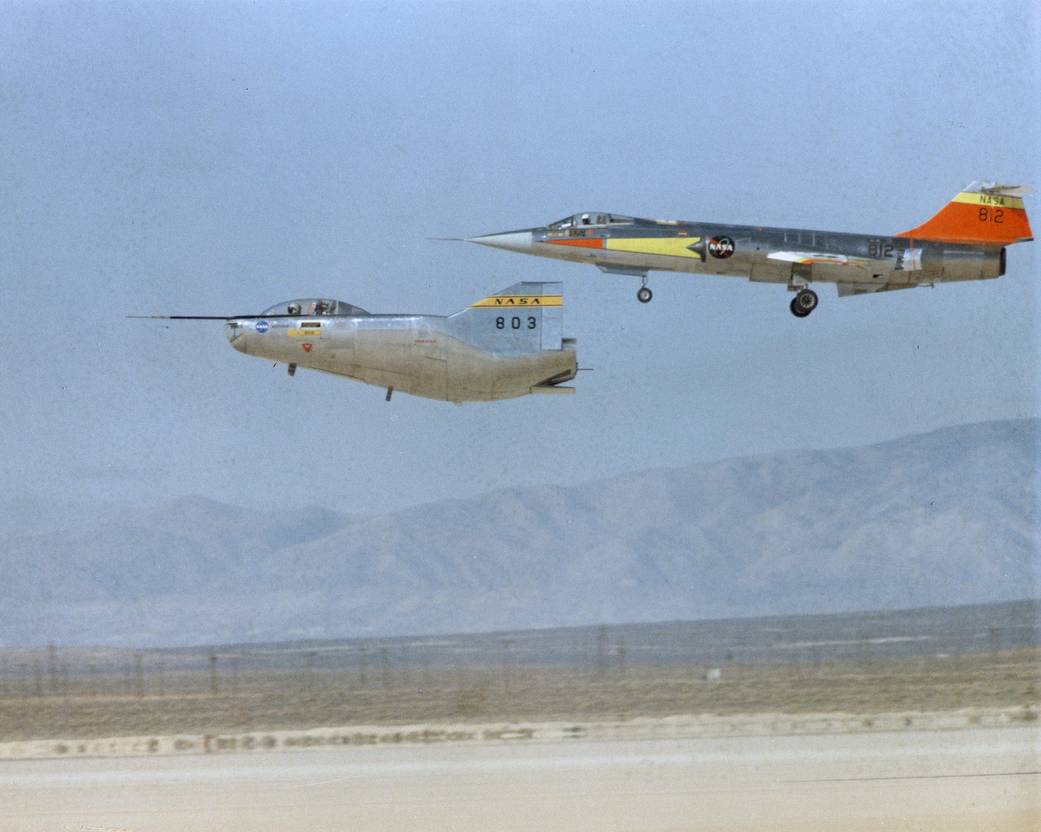
The first flight of the M2-F2, which looked much like the M2-F1, occurred on July 12, 1966, with Thompson again at the controls. By then, the same B-52 used to air launch the famed X-15 rocket research aircraft had been modified to also carry the lifting bodies into the air. The M2-F2 was dropped from the B-52’s wing pylon mount at an altitude of 45,000 feet on that maiden glide flight.
The M2-F2 weighed 4,620 pounds without ballast, was roughly 22 feet long, and had a width of about 10 feet.
On May 10, 1967, during the 16th glide flight, a landing accident severely damaged the vehicle and seriously injured the NASA pilot, Bruce Peterson. (Film footage of the crash was later used in the opening sequence of the popular 1970s-era television show, “The Six-million Dollar Man.”)
M2-F3
NASA pilots said the M2-F2 had lateral control problems that led to the crash, even though it had a stability augmentation control system. When the M2-F2 was rebuilt and redesignated the M2-F3, it was modified with an additional third vertical fin – centered between the tip fins – to improve control characteristics.
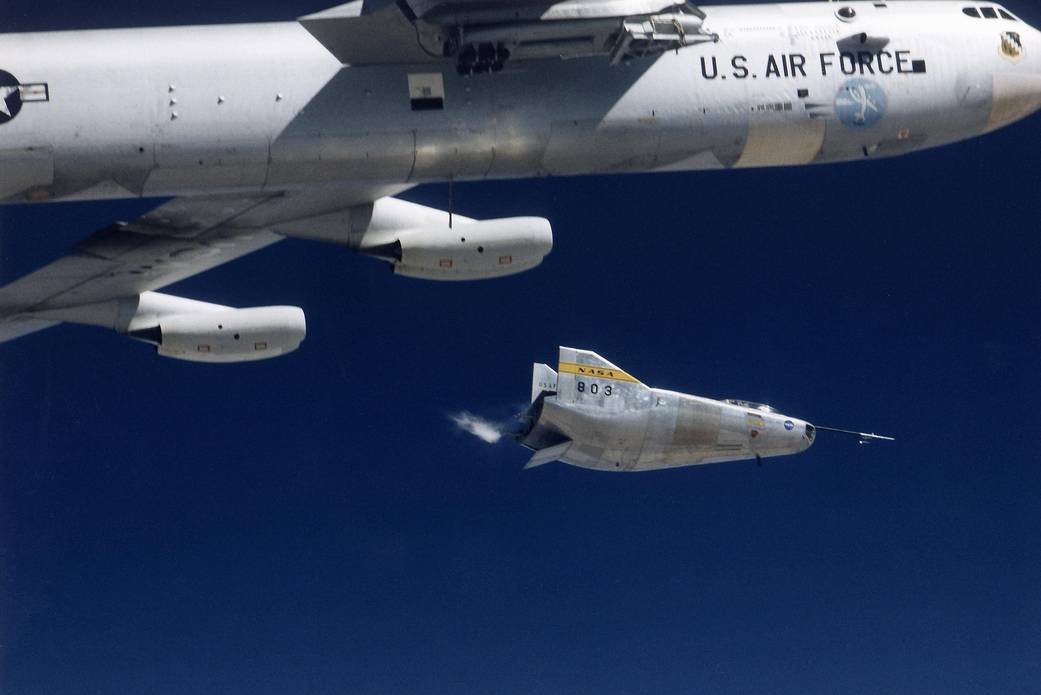
The first flight of the M2-F3, with NASA pilot Bill Dana at the controls, occurred on June 2, 1970. It was a glide flight to evaluate changes in the vehicle’s performance due to the modifications. The modified vehicle exhibited much better lateral stability and control characteristics than had the M2-F2.
Over the next 26 missions, the M2-F3 reached a top speed of l,064 mph (Mach 1.6). Dana was the pilot on that high-speed mission, which took place on Dec. 13, 1972. The highest altitude reached by the M2-F3 was 71,500 feet on Dec. 20, 1972, the date of its last flight, with NASA pilot John Manke at the controls.
A reaction jet control system, similar to thrusters used on orbiting spacecraft, was also installed on the M2-F3 to obtain research data about their effectiveness for vehicle control. As the M2-F3’s portion of the lifting body program neared an end, it evaluated a rate command augmentation control system and a side-arm control stick similar to side-arm controllers now used on many modern aircraft.
The M2-F3 is now on display in the National Air and Space Museum in Washington.
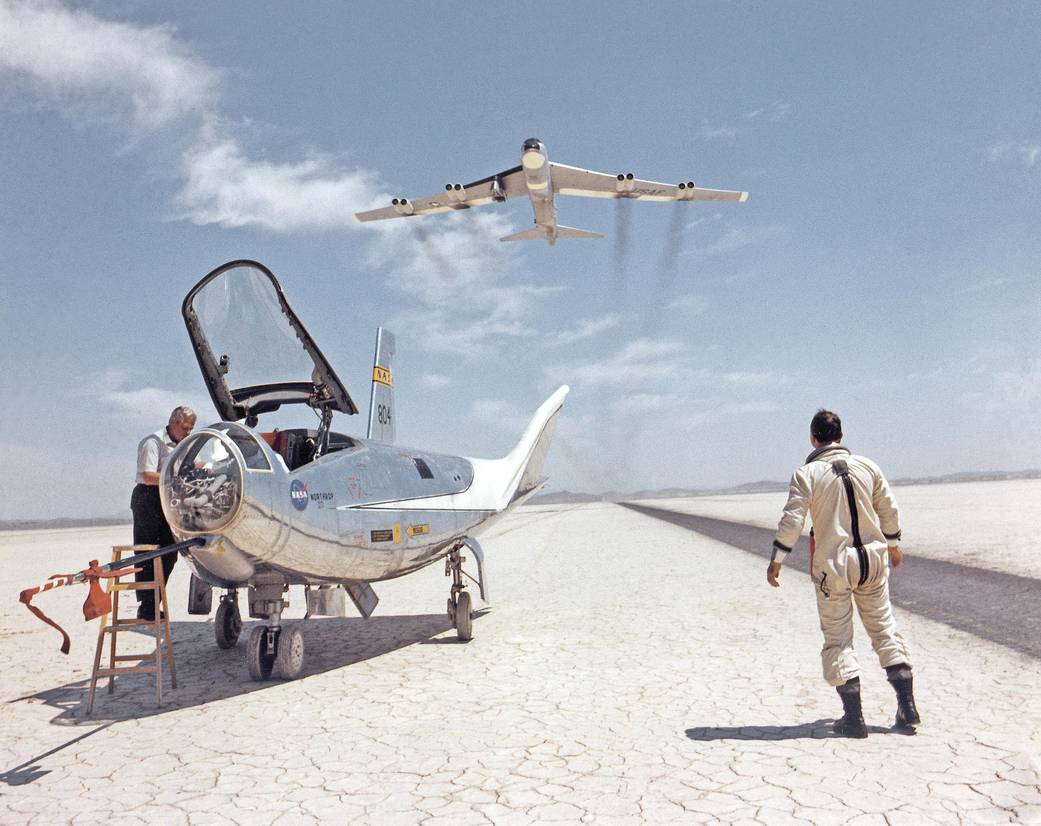
HL-10
The HL-10 was delivered to the the Flight Research Center by Northrop in January 1966, and first flew some 11 months later on Dec. 22 of the same year. The pilot was Bruce Peterson, before he was injured in the M2-F2 accident.
The HL-10 was flown 37 times and set several program records. On Feb. 18, 1970, Air Force test pilot Maj. Peter Hoag flew it to 1,228 mph (Mach 1.86), the fastest speed reached by any of the lifting bodies. Nine days later, NASA’s Bill Dana flew the HL-10 to 90,303 feet, the highest altitude reached by any of the lifting body aircraft. The HL-10 was also the first lifting body to fly supersonically – on May 9, 1969, with Manke at the controls.
The HL-10 featured a longitudinally curved bottom and a laterally rounded top and had a delta planform. In its final configuration, three vertical fins, two of them canted outward from the body and a tall center fin, gave the craft directional control. A flush canopy blended into the smooth rounded nose. It was about 21 feet long, with a span of 13.6 feet. Its glide-flight weight was 6,473 pounds and its maximum gross weight was more than 10,000 pounds.
Flights of the HL-10 contributed substantially to the decision to design the space shuttles without air-breathing engines that would have been used for powered landings. The HL-10 flew its final flight on July 17, 1970, and the craft is now is now on public display at the entrance to NASA Armstrong.
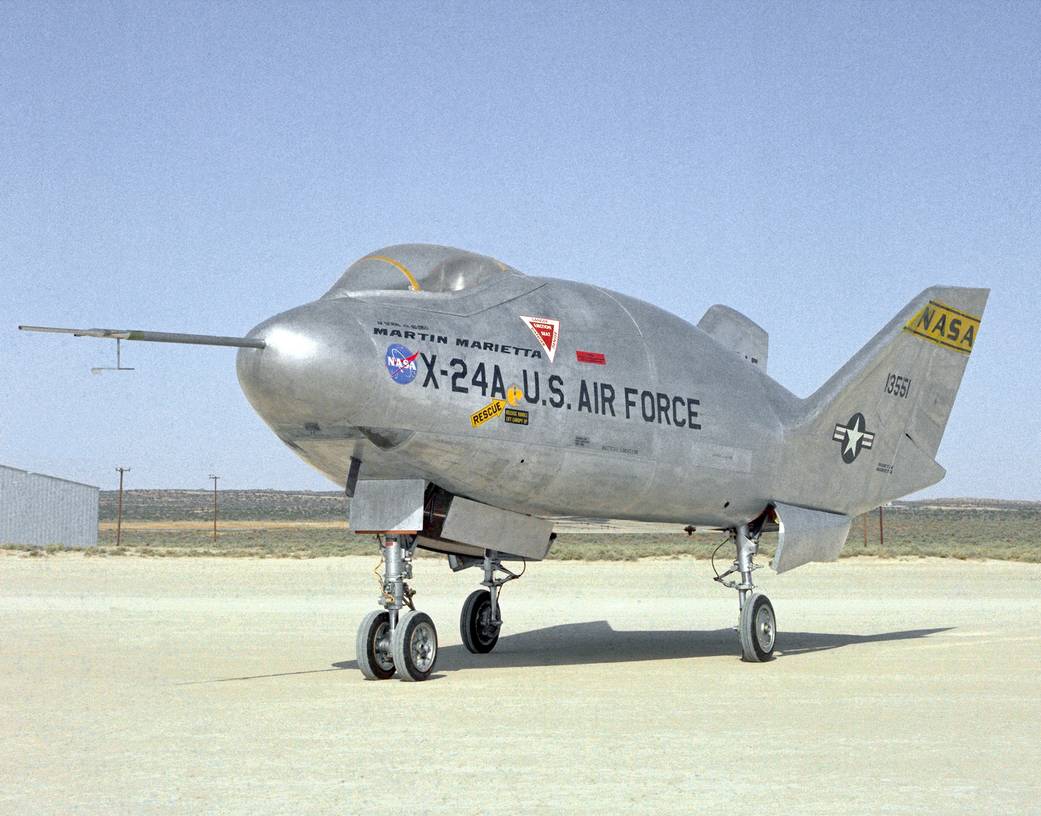
X-24A
Built for the Air Force by Martin, the X-24A was a bulbous-shaped aircraft, with three vertical fins at the rear for directional control. It weighed 6,270 pounds without propellants, was just more than 24 feet long, and had a width of nearly 14 feet. The first unpowered glide flight of the X-24A occurred on April 17, 1969, flown by Air Force Maj. Jerauld Gentry. Gentry also piloted the vehicle on its first powered flight on March 19, 1970.
The X-24A was flown 28 times in a program that, like that of the HL-10, helped validate the concept that a wingless vehicle could be landed unpowered. Some three decades later, X-38 program managers elected to use the X-24A design to save money, since the existing X-24A aerodynamic database was complete. This limited the number of wind tunnel tests that would have been required for a totally new design.
Fastest speed recorded by the the X-24A was 1,036 mph (Mach 1.6), and the maximum altitude reached by the craft was 71,400 feet. Both of those flights were flown by NASA research pilot John Manke, who was also the pilot on its final flight on June 4, 1971.
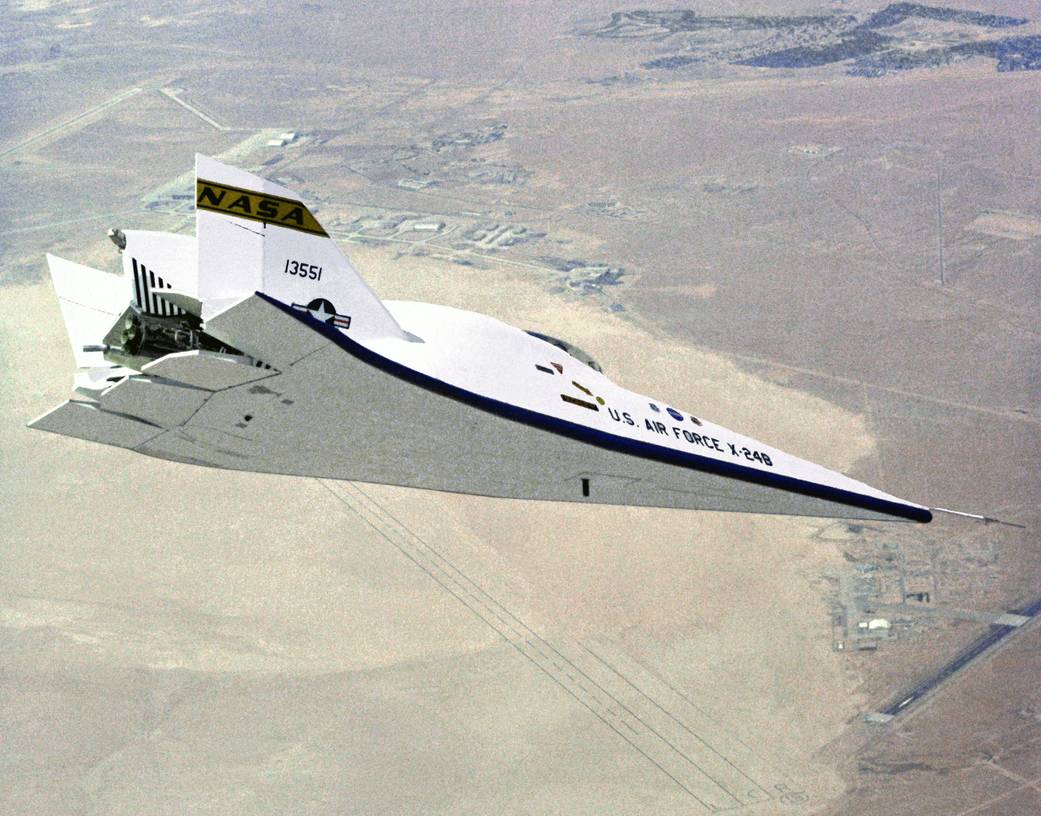
X-24B
The X-24B’s design evolved from a family of potential re-entry shapes proposed by the Air Force Flight Dynamics Laboratory, each with higher lift-to-drag ratios.
To reduce the costs of constructing a research vehicle, the Air Force returned the X-24A to Martin for modifications that converted its bulbous shape into one resembling a “flying flatiron” – a rounded top, flat bottom, and a double-delta planform that ended in a pointed nose.
Manke was first to fly the X-24B, a glide flight on Aug. 1, 1973. He was also the pilot on the first powered mission on Nov. 15, 1973.
Among the final flights with the X-24B were two precise landings on the main concrete runway at Edwards, which showed that accurate unpowered re-entry vehicle landings were operationally feasible. These missions, flown by Manke and Air Force Maj. Mike Love, represented the final milestone in a program that helped write the flight plan for today’s space shuttle landings.
The final powered flight with the X-24B was on Sept. 23, l975, flown by Bill Dana. It was also the last rocket-powered lifting body flight flown at the Flight Research Center. Ironically, it was Dana who also flew the last X-15 rocket plane mission about seven years earlier.
Top speed reached by the X-24B was 1,164 mph (Mach 1.75) by Love on Oct. 25, 1974. The highest altitude reached was 74,100 feet by Manke on May 22, 1975.
The X-24B is now on public display at the Air Force Museum at Wright-Patterson Air Force Base,Ohio.





























